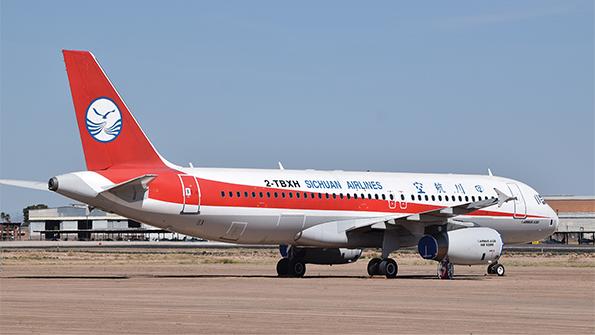
The return of domestic flying in several major markets is good news for MRO providers that maintain narrowbodies, including the Airbus A320 family.
According to the Aviation Week Intelligence Network (AWIN), as of mid-June, 5,912 A320-family aircraft were in regular commercial service, while nearly 2,900 were still parked or stored. Virtually all A320-family jets were in passenger service, with only three A320-200F freighters flying and one parked.
A320-200ceos and A321-200ceos in scheduled service dominated the flying fleet, together accounting for nearly 60% of aircraft in service. The Neo versions of these two types also dominated options and orders, with almost 80% of future deliveries.
A320-family MRO demand will increase from $15.2 billion in 2021 to $20.7 billion in 2025, and this will account for 24% of all commercial MRO demand over the next 10 years, according to the Aviation Week Commercial Fleet and MRO Forecast. The A320 and A321 Ceos will represent 70% of this demand, and A320 and A321 Neos will make up 20%.
These projections are broadly consistent with expectations of major MROs. For example, Lufthansa Technik (LHT) has so far booked A320-family maintenance at about 80% of its budgeted total for the next 12 months, and its budget volume is about 80% of pre-COVID-19 levels. “We count on a relatively strong winter season [in] 2021-22, with a return to a normal winter-summer seasonality as is usual for base maintenance,” says Marcus Motschenbacher, vice president of commercial aircraft maintenance services.
The LHT executive says A320-neos are seeing more usage and thus demanding more base maintenance, while A320ceos lag behind. Many older aircraft normally requiring heavier checks have either been removed from service entirely or are waiting for possible reactivation after being parked. An additional six-month grace period, granted by Airbus due to the pandemic, will stretch what would otherwise have been a sharp peak in demand by reactivating aircraft more evenly across the next 24 months.
But even smoothed out, the return to service poses challenges. “You need a flexible MRO with a wide network to offer a great capacity at one go,” Motschenbacher asserts. Also necessary is access to continuing airworthiness management and Part 21 engineering organizations. “A thorough check-up is needed, even when the storage was for less than four months.”
Given the severe financial pressure on MRO providers, airlines are shopping for sweeter, long-term deals for maintenance. “There is an increase of larger tenders on the market,” Motschenbacher says.
In contrast, lessors only commit to base maintenance when they have found a new lessee. “They want their assets well-serviced and often converted,” Motschenbacher explains. Some lessors are worried that reactivation of commercial aircraft will cause a slot shortage for MRO servicing and delay handovers to new lessees.
Paul Dolan, CEO of ATS, foresees very strong demand for A320-family maintenance in the next 12 months. He expects MROs will have to struggle to meet the demand for maintenance on both A320s and Boeing 737s.
Dolan also sees demand from both airlines and lessors. “Airlines are scrambling to support lift requirements as the market surges back, and lessors are trying to market and support incoming requirements to add aircraft to lessee fleets,” he says.
Dolan estimates that light maintenance on A320s typically takes 10-12 days, with heavier visits requiring 20-35 days. Motschenbacher also sees a wide range of turnaround times. The first C check on a new A320 at 24 months with limited work and no mods can take just five days and 1,500 workhours. But heavy maintenance, sometimes with lifetime extension and structural modifications and rectifications, can go up to 40 days and require 20,000 workhours. On average, he puts A320 base maintenance at about 24 days.
Apart from regular MRO tasks, A320s often require work to satisfy advisory circulars and service bulletins. Motschenbacher says extra work must also be done for corrosion found in wet areas and on wing skins for some aircraft.
At AFI KLM E&M, Head of Business Intelligence Ahmoss Messayeh says some airlines are splitting heavy checks into smaller workscopes to retain capacity, cash and aircraft availability during the summer. His company is also seeing requests from lessors to provide lease-return and storage maintenance.





